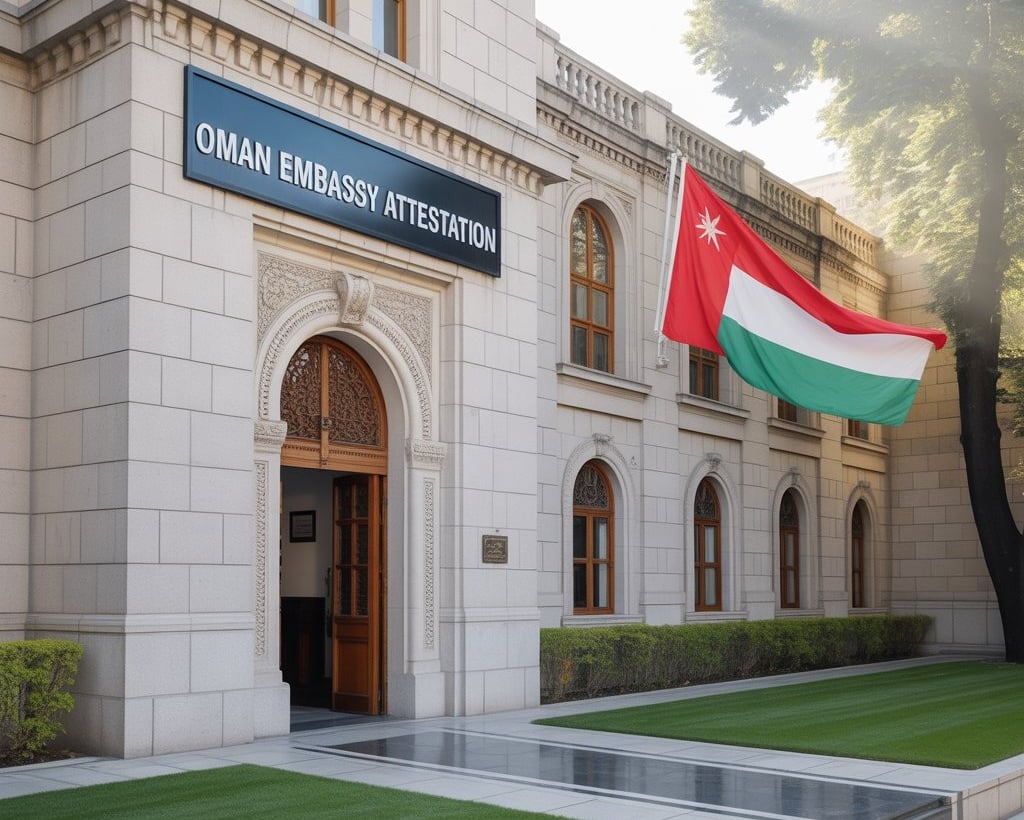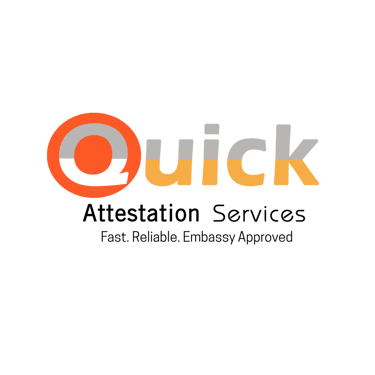MEA to Oman Embassy: Attestation Procedure Guide "oman embassy attestation"
Discover the complete attestation procedure from the MEA to the Oman Embassy. Learn about the steps involved in Oman embassy attestation and ensure a smooth process for your documents.
11/12/20257 min read


Introduction to Document Attestation
Document attestation is a crucial process that ensures the authenticity and legitimacy of documents intended for use in foreign jurisdictions. This procedure holds particular significance in the context of international travel, employment, and educational opportunities. As individuals navigate various global pathways, the need for verified documentation becomes paramount. Without proper attestation, many significant documents, such as academic certificates, marriage licenses, and professional credentials, may not be recognized or accepted by foreign authorities.
At its core, attestation serves to validate the authenticity of a document issued in one country for usage in another. This formal verification is particularly important when individuals seek job placements, admission into international educational institutions, or even residency in foreign nations. In the case of Oman, specific regulations govern the document attestation process, ensuring that all documents relevant to employment, education, and legal matters meet the necessary standards set by Omani authorities.
The attestation process typically begins with obtaining a notarized document from a recognized notary. Following notarization, the document must undergo verification by relevant local government bodies before being submitted for further attestation. This may include the Ministry of Foreign Affairs (MOFA) or other specialized agencies, which assess the document for compliance with Omani standards. It is essential to understand the steps involved to ensure that all necessary documents are properly attested, as this can ultimately affect an individual's ability to achieve their desired goals in Oman.
In summary, understanding document attestation and its relevance is vital for anyone engaging with international systems. The validation process not only enhances the credibility of an individual's documents but also opens up opportunities for personal and professional growth abroad.
Understanding the MEA and Its Role
The Ministry of External Affairs (MEA) in India plays a pivotal role in facilitating various international processes, especially concerning document attestation. As the governmental body responsible for India's foreign relations, the MEA is tasked with several critical functions, one of which is the attestation of documents intended for use abroad. This process is essential to ensure the authenticity and credibility of documents, such as educational certificates, marriage certificates, and various legal documents.
The types of documents that the MEA typically attests include educational qualifications, which are often required for higher education abroad, or employment opportunities in foreign nations. Additionally, marriage certificates are attested to ensure their acceptance in countries that necessitate proof of marital status. Legal documents, such as power of attorney or affidavits, also undergo attestation by the MEA to confirm their veracity and compliance with legal norms.
The procedural steps involved in obtaining MEA attestation begin with document submission. Applicants must gather the requisite documents and submit them to the appropriate MEA office, either directly or through authorized agents. Following submission, the MEA verifies the documents to ensure they meet the necessary criteria for attestation. This step often includes confirming the authenticity of the documents with the issuing authorities, which can vary in duration depending on the complexity of the request and the nature of the documents involved. After successful verification, the MEA provides the attested document, which can then be utilized for various purposes, such as immigration processes or employment verification in foreign countries.
Understanding the role and responsibilities of the MEA is crucial for individuals seeking to navigate the attestation process smoothly, ensuring their documents are recognized and accepted internationally.
Documents Needed for MEA Attestation
The Ministry of External Affairs (MEA) attestation process requires various documents depending on the nature of attestation being sought. These documents can broadly be categorized into educational, personal, and commercial documents. Each category not only has a specific set of requirements but also involves necessary additional paperwork that applicants must prepare to avoid processing delays.
For educational documents, applicants must provide their original degree certificates, mark sheets, and transcripts along with photocopies. It is crucial to ensure that these educational certificates are duly verified by the respective education boards or universities before submission to the MEA. Additionally, applicants might be required to include a declaration stating the purpose of the attestation.
Regarding personal documents, a variety of paperwork is necessary, including birth certificates, marriage certificates, and any documents that establish identity, such as passports. It is advisable to acquire an apostille on certain personal documents, especially if they were issued by state authorities. Applicants should also ensure that they submit an affidavit or a cover letter explaining the need for MEA attestation.
Commercial documents, which include invoices, contracts, and agreements, typically require additional verification from the respective business chambers or trade organizations before being accepted for MEA attestation. It is essential to attach a business registration certificate, which further clarifies the legitimacy of the commercial document in question.
Furthermore, applicants should complete all required forms available on the MEA's official website. An important tip is to create copies of all submitted documents for personal records and to follow up regularly with the attestation center to ensure that the status of the application is tracked effectively.
Navigating the Oman Embassy Attestation Process
After successfully obtaining attestation from the Ministry of External Affairs (MEA), the next step involves the attestation process at the Oman Embassy. This procedure is vital for individuals and businesses looking to validate documents for various purposes, such as employment or education in Oman. It is essential to understand the necessary requirements, which include specific documents, fees, and processing times to ensure a smooth experience at the embassy.
Firstly, applicants must gather the required documents, which typically include the original document that needs to be attested, copies of the document, valid identity proof, and a passport-sized photograph. The type of document—such as educational certificates, commercial documents, or personal documents—may influence specific requirements or additional paperwork needed for the attestation. It is advisable to check the Oman Embassy's official website or contact their office directly for specific guidelines based on the document type.
Regarding fees, the costs associated with the attestation procedure can vary depending on the document type and the urgency of the service requested. The embassy often provides options for expedited processing, although this may incur additional charges. It is prudent to confirm the payment methods accepted by the embassy, as they may require payments to be made in specific formats, such as cash or bank transfers.
Processing times can also differ, ranging from a few hours for urgent requests to several days for standard processing. Applicants should plan accordingly, allowing sufficient time for the entire attestation process, especially if a deadline is involved.
Throughout this procedure, applicants may encounter challenges such as missing documents or discrepancies in the provided information. To address these issues, maintaining clear communication with the embassy and organizing all paperwork meticulously can significantly alleviate potential hurdles. Understanding these steps can help in navigating the Oman Embassy attestation process more effectively.
Fees and Processing Times
Understanding the financial aspects and processing durations associated with the attestation procedure is crucial for individuals seeking document validation through the Ministry of External Affairs (MEA) and the Oman Embassy. The costs associated with these services can vary based on several factors, including the type of document to be attested, the urgency of the request, and any additional services selected.
The MEA typically charges a standard fee for attestation services, which varies by the category of the document. Common documents like educational certificates, legal papers, and personal documents may fall under different fee slabs. Expedited services are available for an additional charge, which can significantly reduce the processing time. It is advisable to check the official MEA website for the most current fees, as these can be periodically updated. Generally, the fees for Oman Embassy attestation are also established and can be higher than those of the MEA due to the additional steps involved in the process. As a result, applicants should be prepared for a slightly greater expenditure when attesting documents intended for use in Oman.
Processing times are another essential consideration. For MEA attestation, the processing typically takes between 2 to 7 business days, depending on the volume of applications and the specific requirements of the documents submitted. If expedited service is requested, the turnaround time can be reduced to as little as 24 hours. In contrast, the Oman Embassy may require a longer processing period, generally ranging from 5 to 10 business days. Again, factors such as staffing and document complexity can affect these timelines. It is important for applicants to allow ample time for the entire attestation process to avoid any delays in their plans.
Common Challenges and Their Solutions
The attestation process can often be fraught with various challenges that may hinder progress and create frustration for applicants. One frequent issue is document discrepancies, which occur when the information on the documents does not match across different certificates or identification. This inconsistency can lead to delays, as embassies may require corrections or additional verifications. To mitigate this issue, it is crucial to double-check all documents for accuracy prior to submission and ensure that names, dates, and details are consistent across all records. In cases where discrepancies arise, it is advisable to obtain official corrections or affidavits to clarify any differences.
Another common hurdle is the presence of incomplete paperwork. Each embassy often has specific requirements regarding the documents that must be submitted for attestation. Missing documents can stall the process, as embassies may not accept partial submissions. To address this, applicants should conduct thorough research on the embassy's requirements and prepare a checklist of necessary documents before beginning the process. Utilizing an attestation professional or service can also streamline this preparation, ensuring all paperwork is in order before it reaches the embassy.
Following embassy-specific guidelines is equally important, as each embassy may have its own set of protocols. These might include how documents should be submitted, processing times, and fees involved. To navigate this successfully, applicants should maintain ongoing communication with the embassy staff through phone calls or emails. Clear and concise communication can provide clarity on any questions regarding the attestation process and can help identify any potential issues early on. By adhering to these suggestions, individuals can significantly reduce the chances of encountering challenges during their attestation journey.
Conclusion and Summary of Steps
In conclusion, navigating the attestation process from the Ministry of External Affairs (MEA) to the Oman Embassy is a task that requires careful planning and attention to detail. The journey begins with the essential step of obtaining the necessary documents validated by the relevant Indian authorities. This may include academic certificates, professional degrees, and personal identification, all of which must be appropriately verified before proceeding to the MEA for further authentication.
Upon receiving the MEA attestation, the next pivotal step is to present these documents to the Oman Embassy. Throughout this process, it is crucial to ensure that all required documentation is in order to avoid delays. This involves verifying that you possess the correct set of documents, including any translations if needed, and that all requisite fees are settled at both the MEA and the Oman Embassy stages.
As the attestation procedure can often be lengthy, exercising patience is essential. It is important to remain compliant with the outlined procedures, documenting each step as you progress. Keeping abreast of any updates to the attestation guidelines is also advisable, particularly since policies and processes can change based on regional or international regulations.
For individuals planning to travel to Oman for education or work, understanding this comprehensive attestation process not only aids in the successful acquisition of necessary approvals but also minimizes potential obstacles. Remaining informed and prepared will ultimately facilitate a smoother transition to your new environment. Thus, embracing these procedural components is integral to ensuring a hassle-free experience when embarking on your journey to Oman.
